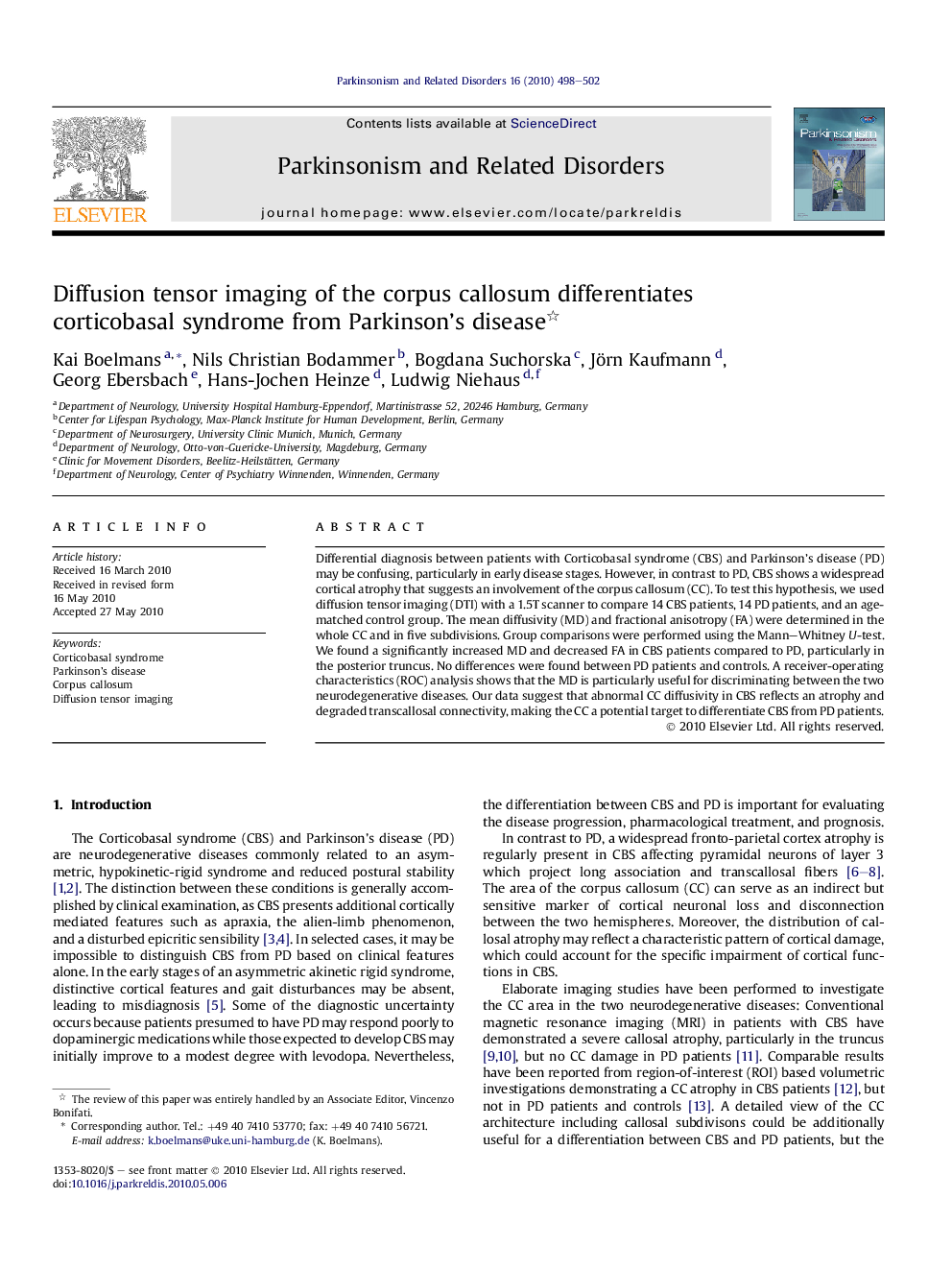| Article ID | Journal | Published Year | Pages | File Type |
|---|---|---|---|---|
| 1921331 | Parkinsonism & Related Disorders | 2010 | 5 Pages |
Differential diagnosis between patients with Corticobasal syndrome (CBS) and Parkinson’s disease (PD) may be confusing, particularly in early disease stages. However, in contrast to PD, CBS shows a widespread cortical atrophy that suggests an involvement of the corpus callosum (CC). To test this hypothesis, we used diffusion tensor imaging (DTI) with a 1.5T scanner to compare 14 CBS patients, 14 PD patients, and an age-matched control group. The mean diffusivity (MD) and fractional anisotropy (FA) were determined in the whole CC and in five subdivisions. Group comparisons were performed using the Mann–Whitney U-test. We found a significantly increased MD and decreased FA in CBS patients compared to PD, particularly in the posterior truncus. No differences were found between PD patients and controls. A receiver-operating characteristics (ROC) analysis shows that the MD is particularly useful for discriminating between the two neurodegenerative diseases. Our data suggest that abnormal CC diffusivity in CBS reflects an atrophy and degraded transcallosal connectivity, making the CC a potential target to differentiate CBS from PD patients.
